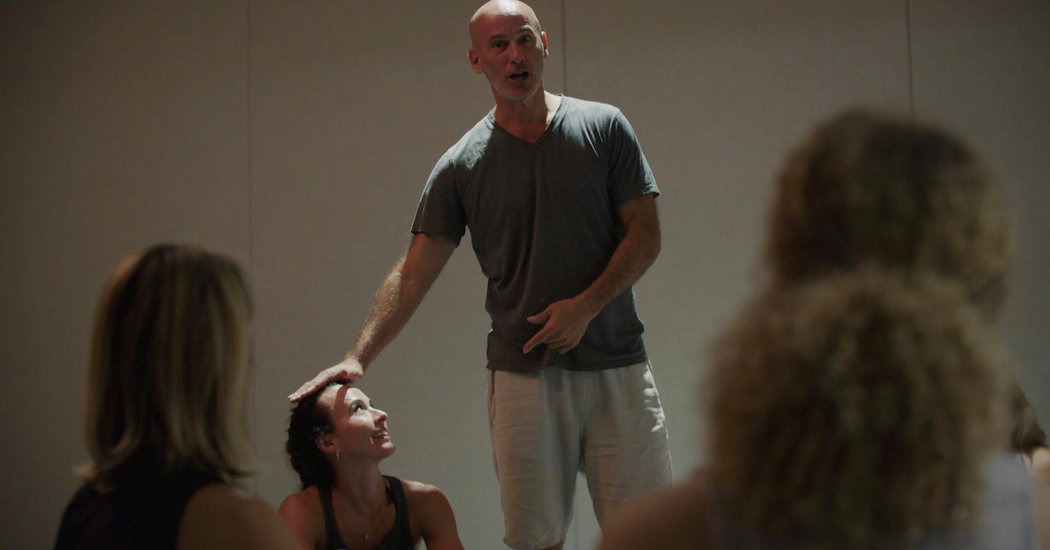
Times Insider explains who we are and what we do, and delivers behind-the-scenes insights into how our journalism comes together.
One secret to reporting that you don’t hear much about is the role of dumb luck.
In July, I began to report an article about touch and consent in yoga. The idea was to learn more about the egregious conduct of Krishna Pattabhi Jois, the guru who made Ashtanga and vinyasa yoga popular before his death in 2009 at 93.
But I also wanted to look at the contemporary yoga world. As a devoted yogi myself, I know the yoga studio remains a place where some teachers, even well-intentioned ones, think they have permission to touch you with impunity just because you have walked in the door and unrolled a mat.
Under the guise of adjustments — the term for using hands to help a student get into a pose or to show support — some teachers are (often unwittingly) triggering confusion, anxiety and even real emotional trauma for students.
I hoped to tap into the conversation that is just starting to take place among yogis about what is and isn’t acceptable and what changes they wish for.
Since my reporting was also going to be featured in an episode of “The Weekly,” I knew I would need visually interesting alternatives to just making dozens of calls from my desk.
Watch “The Weekly,” The Times’s New TV Show, on FX and Hulu
The hands-on teaching practices of some of yoga’s most celebrated gurus raise questions about consent.
I proposed that we attend a class at a yoga festival, where we could avail ourselves of a large pool of students and teachers.
Poking around the internet, I quickly spotted the Asheville Yoga Festival in North Carolina. The mid-July timing was perfect for our production schedule. The southeastern location would add geographic diversity to my reporting.
On the festival’s schedule, I saw a four-hour workshop called “Inversions and Adjustments.” Adjustments were becoming a focal point of my story, and the workshop would be led by a well-known teacher named Jonny Kest. It was a no-brainer.
I had never taken a class taught by Mr. Kest before, but I had practiced at his studio in Birmingham, Mich., half a dozen times over the years when visiting relatives in Michigan. And while I knew he had a hard-core following who liked his hands-on approach to teaching, I didn’t really know what that meant.
As I took part in his workshop — with a producer, camerawoman and sound engineer from “The Weekly” looking on — I quickly learned. Mr. Kest was demonstrating the most hands-on adjustments I had ever seen.
One that particularly raised my eyebrow was performed on a woman doing a pose commonly known as “Triangle.” Mr. Kest lunged one leg around the woman’s leg and wrapped an arm around her from behind, placing his palm between her collar bone and breast.
“You want to be careful of the spots that you want to stay away from,” he said and then moved his hand a few inches.
I almost couldn’t believe what I was witnessing, and I certainly couldn’t believe a camera from The New York Times’s television show was recording it. But I wasn’t sure how it would translate to a viewer. Without context, someone unfamiliar with yoga could think that this is a standard way for a yoga teacher to touch a student, which it was not.
But before the yoga session ended, something took place that was unlike anything I have experienced in my 20 years as a reporter: My story came to life right in front of my eyes, right in front of my notebook, right in front of the television camera for “The Weekly.”
Mr. Kest demonstrated another adjustment. This one involved him placing a woman’s behind on his lap, spreading her legs apart and wrapping them around his waist.
After he showed how to do this, he asked the class participants to practice the adjustment with a partner. That’s when Catherine Derrow, a yoga teacher from Columbus, Ohio, approached Mr. Kest and quietly told him that she would be upset if a teacher touched her in such a way, especially without telling her what he was going to do and asking her permission. “I would be very surprised,” she said.
Mr. Kest encouraged Ms. Derrow to share her concerns with the whole class. She did so and what ensued was a spirited conversation among Mr. Kest and many students in the class about their preferred ways of being asked for consent before being adjusted in yoga classes. “I don’t do any of that,” Mr. Kest told them.
After the workshop concluded, I met with Jamila Wignot, my producer, and we asked each other several times, dumbstruck, “Did that actually just happen?”
Some yoga teachers like to say the most important part of your practice is simply showing up on the mat. In this case, that was true for journalism, too.
Follow the @ReaderCenter on Twitter for more coverage highlighting your perspectives and experiences and for insight into how we work.







